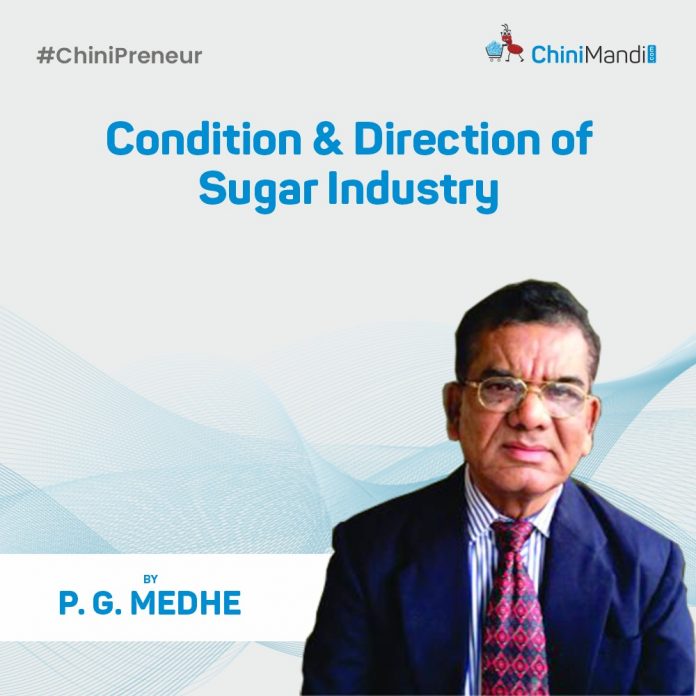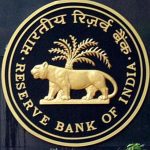Branding plays a crucial role in the sugar industry, especially for sugar factories. Branding helps sugar factories establish a unique identity in the market. It allows them to differentiate their products from competitors. A strong brand can convey quality, reliability, and consistency, which are essential factors for consumers and buyers. A well-branded sugar product creates trust among consumers. When people recognize and trust a brand, they are more likely to choose it over generic alternatives. Brands that consistently deliver high-quality sugar build a positive reputation, leading to customer loyalty. Effective branding enables sugar factories to promote their products efficiently. It provides a platform for advertising, packaging design, and marketing campaigns. Brands can communicate their unique selling points (USPs) and connect emotionally with consumers.
Sugar factories produce various types of sugar (white, brown, organic, etc.). Branding helps distinguish these products based on their characteristics, origin, or processing methods. For example, a factory might brand its organic sugar/ Sulphur less sugar as “Pure Earth” to highlight its natural and eco-friendly attributes. A strong brand allows sugar factories to command premium prices. Consumers are often willing to pay more for a trusted brand. Effective branding can elevate sugar from a commodity to a valued product, impacting pricing strategies. In the global market, branding becomes even more critical. Recognizable brands facilitate international trade by assuring buyers of consistent quality. Countries with strong sugar brands can export their products more successfully.
As health-consciousness grows, sugar factories can use branding to address concerns related to sugar consumption. Brands can emphasize low-sugar variants, natural sweeteners, or sustainable practices to align with consumer preferences. Remember that branding isn’t just about logos and packaging—it’s about creating a meaningful connection with consumers and stakeholders. By investing in branding, sugar factories can enhance their market presence and build lasting relationships.
CHALLENGES ABOUT BRANDED SUGAR IN CONSUMER MARKETS-
1) Competition and Market Saturation: The sugar industry faces intense competition from various brands. Established players and new entrants vie for consumer attention. To stand out, branded sugar must find a unique selling proposition (USP) that resonates with consumers.
2) Price Sensitivity: Consumers are price-conscious, especially for staple products like sugar. Branded sugar often comes at a premium compared to generic options. Balancing quality, pricing, and perceived value is crucial.
3) Health and Wellness Trends: Growing health awareness has led consumers to scrutinize sugar consumption. Brands must address health concerns. Some consumers seek low-sugar or natural sweeteners, impacting branded sugar sales.
4) Supply Chain and Sourcing: Ensuring a consistent supply of high-quality sugar is challenging. Brands must maintain relationships with reliable suppliers. Sourcing ethically and sustainably is also vital.
5) Packaging and Branding Costs: Creating appealing packaging and building a recognizable brand requires investment. Balancing packaging costs with consumer appeal is essential.
6) Distribution and Retail Channels: Getting branded sugar onto store shelves and e-commerce platforms is critical. Negotiating distribution agreements and managing inventory can be complex.
7) Consumer Perception and Trust: Building trust takes time. Brands must deliver on promises consistently. Negative incidents (e.g., product recalls) can harm reputation.
8) Regulatory Compliance: Sugar products must meet safety and labeling regulations. Compliance with health claims and nutritional information is essential.
9) Changing Consumer Preferences: Consumer tastes evolve. Brands must adapt to shifting preferences. Staying relevant requires innovation and agility.
10) Marketing and Promotion: Effective marketing requires creativity and understanding consumer behavior. Brands must engage through social media, influencer collaborations, and targeted campaigns. In summary, successful marketing of branded sugar involves navigating these challenges while delivering value, quality, and trust to consume
TIME BOUND GOVT. MONTHLY RELEASE MECHANISM OF SUGAR SALE AND BRANDING OF SUGAR-
1) Quota Allocation and Market Control: The government allocates monthly quotas for sugar mills to sell in the domestic market. Brands need to strategize their marketing efforts within these quotas. Limited availability can create urgency and impact consumer perception.
2) Supply and Demand Dynamics: Quotas influence supply levels. When quotas are tight, branded sugar becomes a sought-after commodity. Brands must manage their inventory and distribution channels effectively to meet demand.
3) Price Stability and Consumer Trust: Quotas help stabilize sugar prices by preventing excessive supply or shortages. Consistent pricing enhances consumer trust in branded sugar. Fluctuations can erode brand reputation.
4) Market Positioning and Differentiation: Brands within the quota system must differentiate themselves. Quality, packaging, and messaging matter. Effective branding can help brands stand out even within limited sales opportunities.
5) Export and International Trade: Quotas impact export availability. Brands aiming for global markets must plan accordingly. Exported branded sugar represents the country’s image and quality standards.
6) Compliance and Transparency: Brands must adhere to quota restrictions transparently. Violations can harm reputation. Compliance reinforces brand integrity and builds consumer confidence.
In summary, the time-bound release mechanism affects branding by shaping supply, pricing, and market dynamics. Brands that adapt strategically can thrive within these constraints.
PERCENTAGE OF HOUSEHOLD CONSUMPTION AND INDUSTRIAL PURPOSE SUGAR CONSUMPTION AND BRANDING OF SUGAR-
Household Consumption: Household consumption refers to the sugar consumed directly by individuals for personal use. It includes sugar added to beverages, baked goods, and other foods. People use sugar in their daily lives for sweetening coffee, tea, desserts, and cooking.
Recommended Intake: The American Heart Association suggests limiting added sugar to no more than 10% of daily caloric intake. For a 2,000-calorie diet, this translates to about 12 teaspoons (48 grams) of added sugar per day.
Industrial Purpose Consumption: Industrial sugar is primarily used in non-consumption applications, such as food processing, Chocolates, Soft drinks, pharmaceuticals, cosmetics, and other industrial processes. It differs from retail or consumer sugar, which is typically sold in granulated or powdered form for direct consumption. The food and beverage industry is the largest consumer of industrial sugar, using it as a sweetening agent in various products like confectionery, soft drinks, baked goods, and dairy items.
Branding of Sugar: Branding plays a crucial role in the sugar industry, even beyond consumer products.
1) Market Positioning: Branded sugar factories establish a unique identity, emphasizing quality, reliability, and consistency.
2) Differentiation: Brands distinguish their products based on characteristics (e.g., organic, natural) or processing methods.
3) Consumer Trust: A strong brand builds consumer trust, impacting loyalty and repeat purchases.
4) Export and International Trade: Sugar brands facilitate successful exports by assuring consistent quality.
In summary, household consumption focuses on individual use, while industrial sugar serves various applications. Effective branding enhances market presence and trust, benefiting both sectors. Remember to check labels for added sugars and make informed choices!
FACTORS AFFECTING SWITCHING OVER TO BRANDING OF SUGAR-
1) Market Size and Growth: The branded sugar market in India was valued at approximately USD 729.55 million in 2023 and is expected to grow at a CAGR of 9.1% through 20291. This indicates a growing interest in branded sugar products.
2) Consumer Trust and Quality Assurance: Branded sugar offers quality assurance and reliability, which can be appealing in a market where adulteration is a concern. This trust can drive consumer preference towards branded products
3)Packaging and Convenience: Branded sugar often comes in convenient packaging options, which can enhance its appeal to consumers.
4) Health and Wellness Trends: There is a growing trend towards health-conscious products, and some branded sugars are marketed as low-calorie or low-glycemic alternatives. This can attract a niche market of health-conscious consumers.
5) Cost of Branding: Branding involves significant costs, including marketing, packaging, and distribution. However, if the brand can establish a strong market presence and consumer trust, these costs can be offset by higher sales and potentially higher margins.
Given the current market trends and consumer preferences, it seems there is potential for branded sugar to succeed in India. However, it would require a strategic approach to marketing and positioning to ensure that the benefits of branding outweigh the costs.
BRANDING OF SUGAR COMES WITH SEVERAL CHALLENGES-
1) Price Sensitivity: Indian consumers are highly price-sensitive, especially for staple products like sugar. Branded sugar often comes at a premium, which might deter price-conscious buyers.
2) Low Brand Awareness: As you mentioned, the per capita consumption of sugar is relatively low, and there is little emphasis on branding. Educating consumers about the benefits of branded sugar can be a significant hurdle.
3) Distribution Network: Establishing a robust distribution network to ensure branded sugar reaches both urban and rural areas can be costly and complex.
4) Competition from Unbranded Sugar: The market is dominated by unbranded sugar, which is cheaper and more readily available. Competing with these established products requires significant marketing efforts.
5) Consumer Trust: Building trust in a new brand takes time, especially in a market where consumers are used to buying unbranded products.
6) Regulatory Compliance: Ensuring that branded sugar meets all regulatory standards and quality checks can add to the cost and complexity of branding.
7) Marketing Costs: Effective branding requires substantial investment in marketing and advertising to create brand awareness and loyalty.
Despite these challenges, with a well-thought-out strategy focusing on quality, trust, and effective marketing, it is possible to carve out a niche in the branded sugar market.
STRATEGIC APPROACH FOR PROMOTING BRANDING OF SUGAR-
1) Highlight Quality and Purity: Emphasize the quality and purity of branded sugar compared to unbranded options. Use certifications and quality seals to build trust.
2) Health Benefits: If applicable, promote any health benefits, such as lower glycemic index or organic certification. This can attract health-conscious consumers.
3) Packaging: Invest in attractive and convenient packaging. Smaller, resealable packs can appeal to urban consumers, while larger, economical packs can target families.
4) Educational Campaigns:Run campaigns to educate consumers about the benefits of branded sugar. Use social media, TV ads, and in-store promotions to reach a wide audience.
5)Celebrity Endorsements: Leverage endorsements from popular celebrities or influencers to build brand credibility and appeal.
6) Promotional Offers: Offer discounts, loyalty programs, or bundled deals to encourage trial and repeat purchases.
7) Localize Marketing: Tailor marketing messages to resonate with local cultures and preferences. Use regional languages and culturally relevant themes.
8) Retail Partnerships: Partner with major retail chains and e-commerce platforms to ensure wide availability and visibility.
9) Community Engagement: Engage with local communities through events, sponsorships, and CSR activities to build a positive brand image.
10) Feedback and Improvement: Continuously gather consumer feedback and improve the product and marketing strategies based on insights.
By focusing on these strategies, companies can effectively promote branded sugar and build a loyal customer base.
SUCCESS STORY OF BRANDED SUGAR: One notable success story in the branded sugar market in India is Madhur Sugar. Here are some key points about their journey:
1) Quality Assurance: Madhur Sugar has built its brand around the promise of 100% pure and hygienic sugar. This focus on quality has helped them gain consumer trust.
2)Innovative Packaging: They introduced innovative packaging solutions that keep the sugar fresh and free from contamination, which appealed to health-conscious consumers.
3) Strong Distribution Network: Madhur Sugar has established a robust distribution network, ensuring their products are available across urban and rural markets.
4)Effective Marketing: The brand has invested in effective marketing campaigns, including TV commercials and digital marketing, to create strong brand awareness.
5) Consumer Education: They have run campaigns to educate consumers about the benefits of using branded sugar over unbranded options, emphasizing purity and quality. These strategies have helped Madhur Sugar become a leading player in the branded sugar market in India.
HOW TO OVERCOME PRICE SENSITIVITY CHALLENGES? :
Overcoming price sensitivity challenges in the branded sugar market requires a combination of strategic pricing, value addition, and effective communication. Here are some strategies companies can use:
1) Value Proposition: Clearly communicate the value proposition of branded sugar. Highlight benefits such as purity, quality, and health advantages that justify the higher price.
2) Tiered Pricing: Offer different product tiers to cater to various consumer segments. For example, premium, mid-range, and budget-friendly options can help attract a broader audience.
3) Promotional Offers: Introduce discounts, loyalty programs, and bundled deals to make branded sugar more attractive. Limited-time offers can also encourage trial purchases.
4) Smaller Packaging: Provide smaller, more affordable packaging options. This allows consumers to try the product without committing to a larger, more expensive pack.
5) Educate Consumers: Run educational campaigns to inform consumers about the benefits of branded sugar over unbranded alternatives. Use testimonials, quality certifications, and health benefits to build trust.
6) Leverage Digital Marketing: Use social media and digital platforms to reach a wider audience cost-effectively. Engage with consumers through informative content, promotions, and interactive campaigns.
7) Partnerships and Collaborations: Partner with retailers, e-commerce platforms, and other brands to increase visibility and offer exclusive deals.
8) Community Engagement: Engage with local communities through events, sponsorships, and CSR activities. Building a positive brand image can help justify the premium price.
9) Focus on Quality: Ensure consistent quality and maintain high standards. Positive word-of-mouth from satisfied customers can help overcome price sensitivity.
10) Innovative Packaging: Invest in packaging that enhances convenience and preserves product quality. Attractive and functional packaging can add perceived value.
By implementing these strategies, companies can effectively address price sensitivity and build a loyal customer base for branded sugar.
DATA ABOUT BRANDED AND UNBRANDED SUGAR-
1) Trust and Quality: Consumers often perceive branded products as more trustworthy and of higher quality. This perception can drive preference for branded sugar, especially among health-conscious consumers.
2) Price Sensitivity: Despite the preference for quality, many consumers still opt for unbranded sugar due to its lower cost. Price remains a significant factor, particularly in rural areas and among lower-income groups1.
3) Brand Awareness: Awareness and familiarity with a brand can influence consumer choices. Brands that invest in marketing and education about their product’s benefits tend to perform better1.
4) Convenience and Packaging: Branded sugar often comes in convenient and hygienic packaging, which can be a deciding factor for urban consumers who prioritize convenience1.
5) Consumer Behavior: A survey indicated that over 55% of consumers prefer branded products in general due to perceived quality and trustworthiness.
However, this preference can vary significantly based on the product category and consumer demographics. These insights suggest that while there is a market for branded sugar, companies need to address price sensitivity and increase brand awareness to capture a larger share of the market.
PROSPECTS TO GROWTH BRANDED SUGAR IN INDIA-
1) Market Size and Growth Rate: The branded sugar market in India was valued at approximately USD 729.55 million in 2023 and is projected to grow at a CAGR of 9.1% through 20291. Another report estimates the market size to reach USD 1,472.12 million by 2029, growing at a CAGR of 9.5%2.
2) Increasing Consumer Awareness: There is a growing awareness among consumers about the benefits of branded sugar, such as quality assurance and hygiene. This is driving demand, especially in urban areas.
3) Health and Wellness Trends: The market is also benefiting from the rising health consciousness among consumers. Branded sugars that offer health benefits, such as low glycemic index or organic options, are gaining popularity.
4) Product Innovations: Companies are continuously innovating with new product offerings and better packaging solutions. For example, EID Parry introduced “Sweet Care,” a branded sugar with a reduced glycemic index.
5) Rising Disposable Income: Increasing disposable income and urbanization are boosting consumer spending on branded products, including sugar.
6) E-commerce Growth: The growing presence of branded sugar on e-commerce platforms is making it more accessible to a wider audience2. These factors indicate a robust growth trajectory for the branded sugar market in India.
LOW MARKET PRICES, HIGH BRANDING COST AND GOVERNMENTS RESTRICTIONS ABOUT SUGAR MSP—-SUSTAINABILITY MATTERS!
Achieving sustainability in the sugar industry during periods of low market prices and high branding costs can be challenging, but it’s possible with strategic planning and innovative approaches. Here are some strategies to consider:
1) Cost-Effective Branding-
Digital Marketing: Utilize social media and digital platforms for cost-effective marketing campaigns. Engage with consumers directly to build brand loyalty without heavy spending.
Collaborations: Partner with other brands or influencers to share marketing costs and reach a wider audience.
Certifications: Obtain certifications like Fairtrade, USDA Organic, or Bonsucro to appeal to environmentally conscious consumers and justify premium pricing.
Eco-Friendly Packaging: Invest in sustainable packaging solutions that can attract eco-conscious buyers and reduce environmental impact.
- Diversification-
Product Range: Diversify your product range to include value-added products like organic sugar, or sugar-based snacks.
Alternative Markets: Explore alternative markets such as biofuels (ethanol production) or other industrial uses for sugar by-products1.
4.Operational Efficiency-
Technology Integration: Implement advanced technologies to optimize production processes, reduce waste, and lower costs.
Supply Chain Management: Streamline supply chain operations to minimize costs and improve efficiency.
- Government Support-
Advocacy: Work with industry associations to advocate for supportive government policies, such as subsidies or incentives for sustainable practices.
Compliance: Ensure compliance with government regulations on MSP and other policies to avoid penalties and maintain a good reputation.
- Consumer Education-
Awareness Campaigns: Educate consumers about the benefits of sustainable sugar production and the importance of supporting ethical brands.
Transparency: Be transparent about your production processes and sustainability efforts to build trust with consumers
- Community Engagement-
Local Sourcing: Support local farmers and communities by sourcing raw materials locally, which can also reduce transportation costs and carbon footprint.
Corporate Social Responsibility (CSR): Engage in CSR activities that benefit the community and enhance your brand image.
By implementing these strategies, sugar producers can achieve sustainability even during challenging market conditions.
In conclusion, a comprehensive policy framework is essential to catalyze the Indian sugar industry towards sustainable growth and global competitiveness. By addressing the challenges of overproduction, ensuring fair MSP, promoting value-added products, and enhancing branding efforts, India can transform its sugar sector into a robust and resilient industry. Strategic investments in ethanol production, storage solutions, and market regulation will not only stabilize prices but also provide long-term benefits to farmers and sugar mills alike. With a concerted effort from the government, industry stakeholders, and consumers, the Indian sugar industry can achieve new heights of prosperity and sustainability.
P.G. Medhe is the former Managing Director of Shri Chhatrapati Rajaram Sahakari Sakhar Karkhana Ltd and sugar industry analyst. He can be contacted at +91 9822329898.












